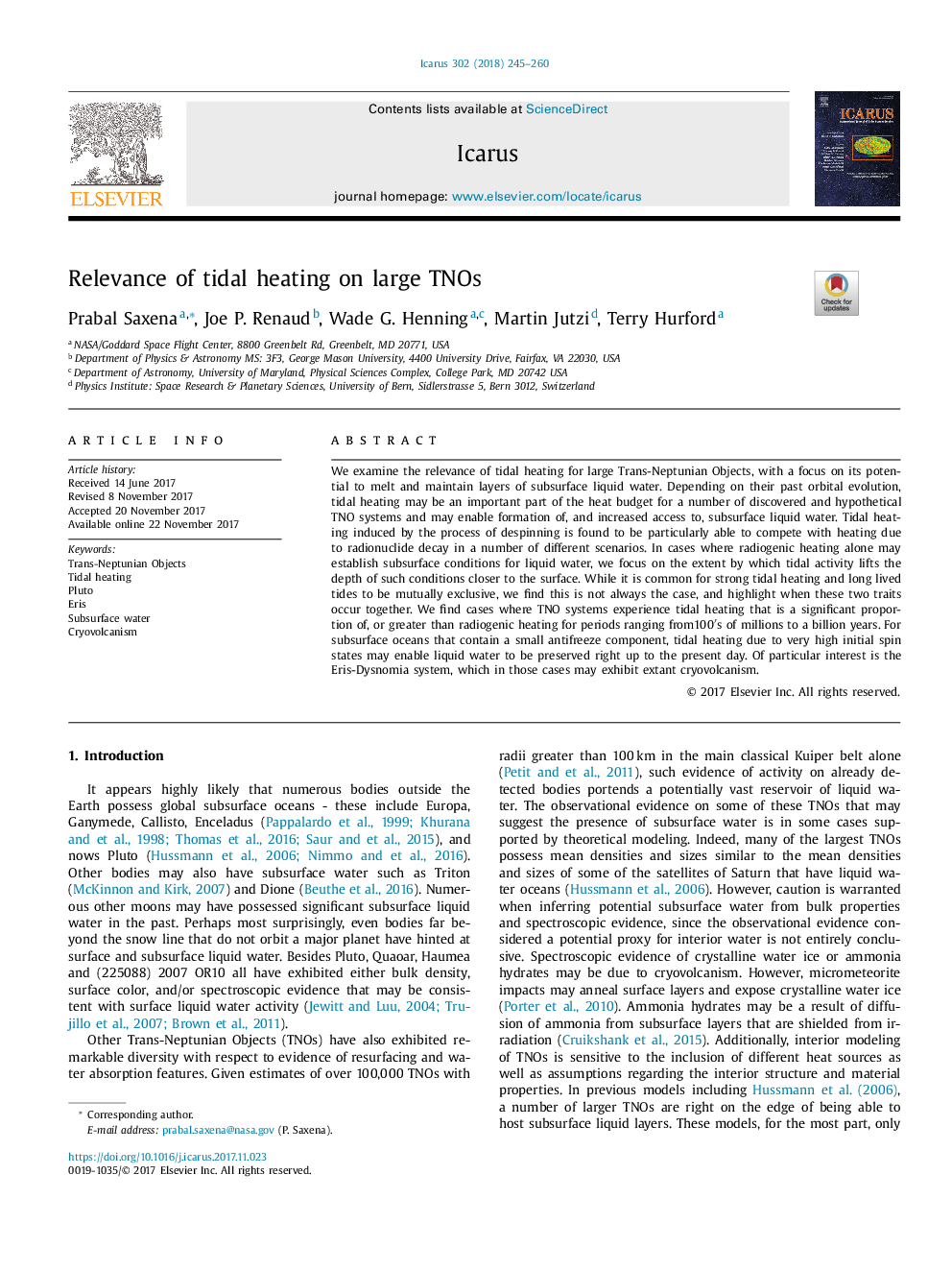| Article ID | Journal | Published Year | Pages | File Type |
|---|---|---|---|---|
| 8134552 | Icarus | 2018 | 16 Pages |
Abstract
We examine the relevance of tidal heating for large Trans-Neptunian Objects, with a focus on its potential to melt and maintain layers of subsurface liquid water. Depending on their past orbital evolution, tidal heating may be an important part of the heat budget for a number of discovered and hypothetical TNO systems and may enable formation of, and increased access to, subsurface liquid water. Tidal heating induced by the process of despinning is found to be particularly able to compete with heating due to radionuclide decay in a number of different scenarios. In cases where radiogenic heating alone may establish subsurface conditions for liquid water, we focus on the extent by which tidal activity lifts the depth of such conditions closer to the surface. While it is common for strong tidal heating and long lived tides to be mutually exclusive, we find this is not always the case, and highlight when these two traits occur together. We find cases where TNO systems experience tidal heating that is a significant proportion of, or greater than radiogenic heating for periods ranging from100â²s of millions to a billion years. For subsurface oceans that contain a small antifreeze component, tidal heating due to very high initial spin states may enable liquid water to be preserved right up to the present day. Of particular interest is the Eris-Dysnomia system, which in those cases may exhibit extant cryovolcanism.
Related Topics
Physical Sciences and Engineering
Earth and Planetary Sciences
Space and Planetary Science
Authors
Prabal Saxena, Joe P. Renaud, Wade G. Henning, Martin Jutzi, Terry Hurford,
